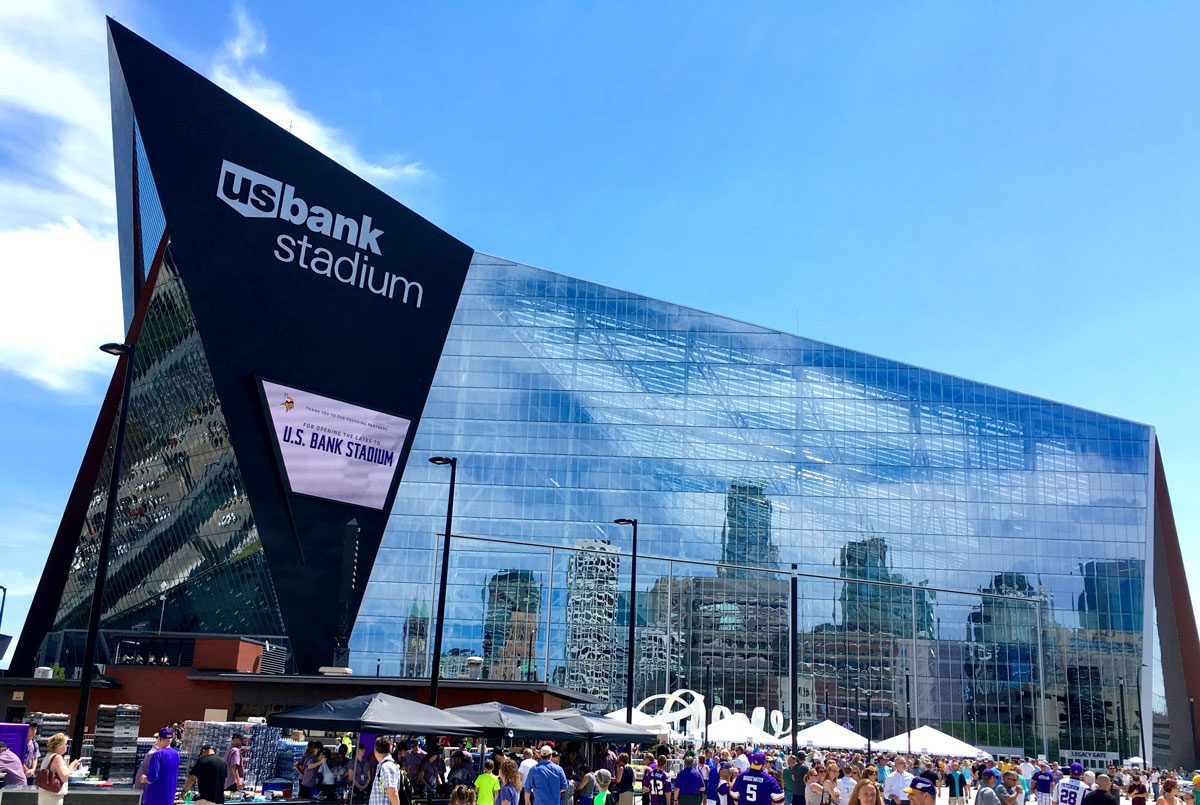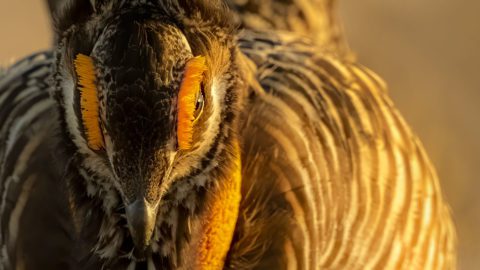New Study May Help Minnesota Vikings Stadium Reduce Bird Collisions
By Greg Breining
March 30, 2020
From the Spring 2020 issue of Living Bird magazine. Subscribe now.
The U.S. Bank Stadium in Minneapolis kills more than 100 birds each year, making the home field of the Minnesota Vikings one of the city’s most dangerous buildings for bird collisions, according to a recent PLOS One study funded by the Vikings and the Minnesota Sports Facilities Authority.
Total glass area and the presence of nearby vegetation contributed most to bird collisions at the stadium, says study coauthor Scott R. Loss, an ecology professor at Oklahoma State University.
An accompanying report by the study’s researchers and Audubon Minnesota recommended changes to the stadium that might reduce bird deaths.
“We’re really curious to see where the stadium authority takes this,” says Rob Schultz, executive director of Audubon Minnesota.
Collisions with buildings, especially windows, kill hundreds of millions of birds per year in the United States.
“It has to be having some effect on some species,” says Loss.
Audubon Minnesota was highly critical of the design plans for U.S. Bank Stadium—which included vast expanses of highly reflective glass—before the building was built. After the stadium’s opening in 2016, Audubon Minnesota conducted meetings with the sports authority about reducing bird kills that resulted in funding for Loss’s study.
The researchers found carcasses of 75 bird species throughout downtown Minneapolis. Five species accounted for half of all collisions—White-throated Sparrow, Nashville Warbler, Ovenbird, Common Yellowthroat, and Tennessee Warbler.
At the stadium, most collisions occurred on the large facade of glass. The report made several recommendations: Treat the glass with films or markers to help birds see it; prioritize glass treatments where trees and other vegetation are reflected; and monitor weather and migration forecasts and reduce lighting at night during key migration periods.
The Vikings and sports authority issued a statement saying they will review the recommendations, and that the two organizations “are pleased to have funded this first-of-its-kind study.” Says Audubon Minnesota’s Schultz: “From conversations I’ve had with them since, they’re taking the report very seriously, and they’re looking for various options to help reduce those collisions.”

All About Birds
is a free resource
Available for everyone,
funded by donors like you
American Kestrel by Blair Dudeck / Macaulay Library



